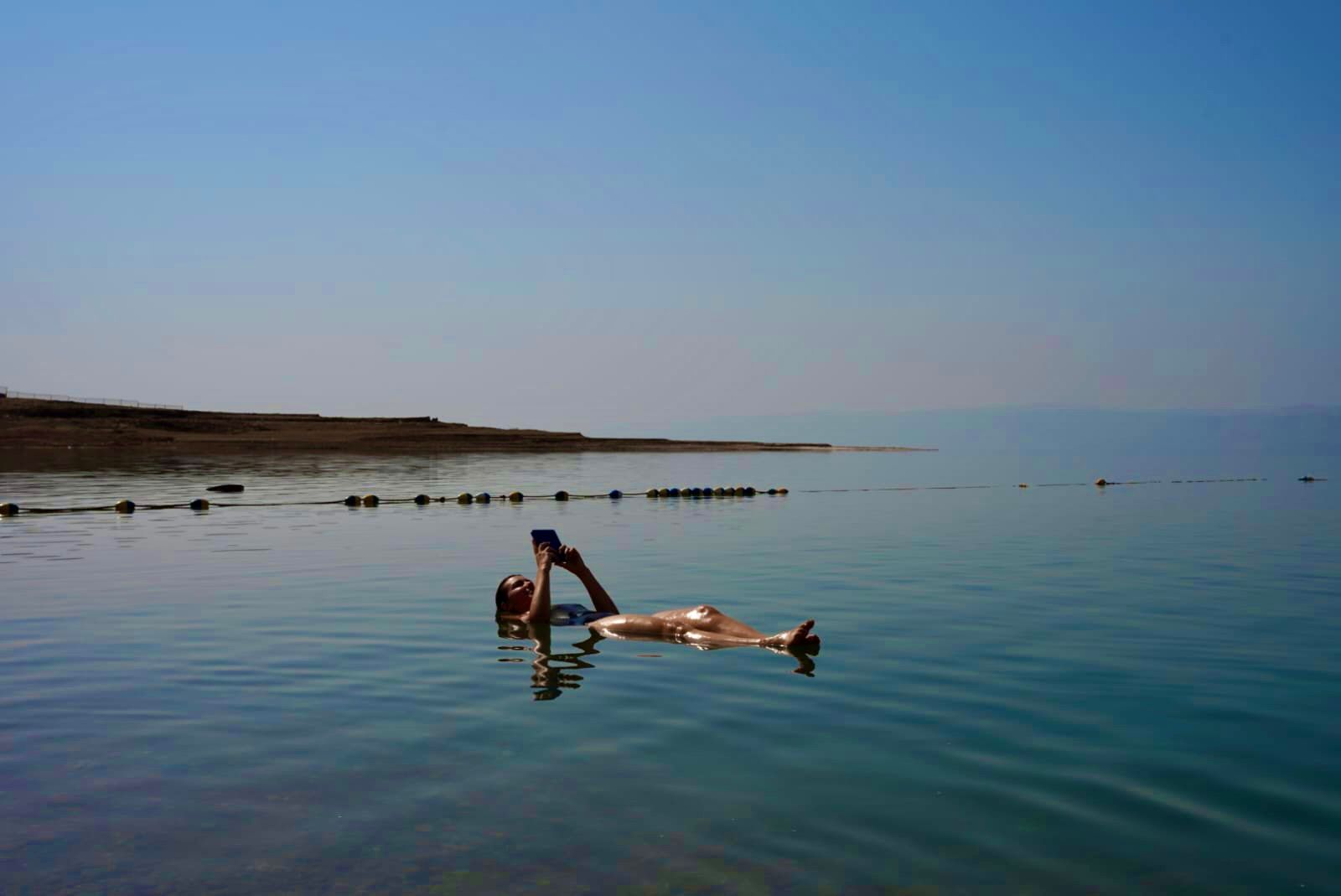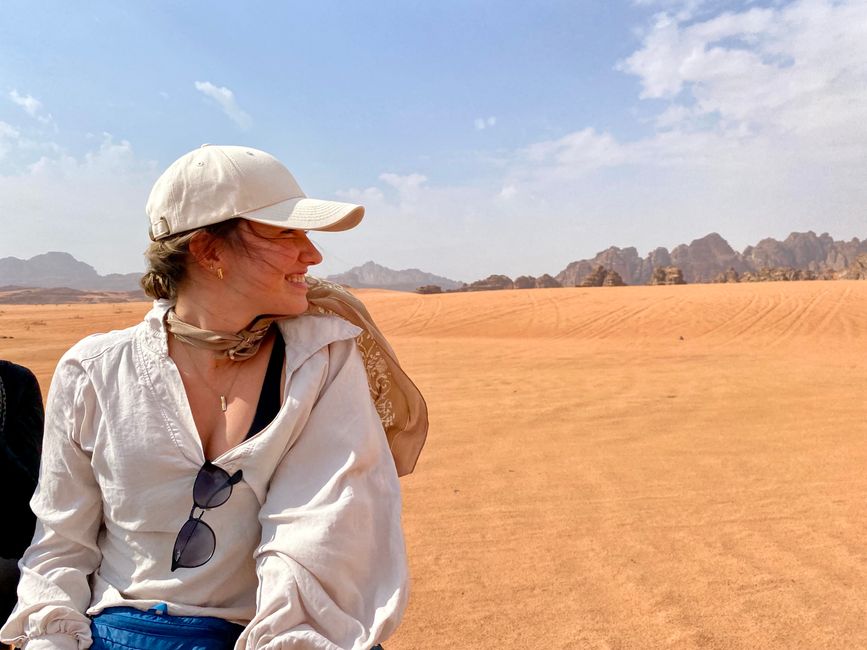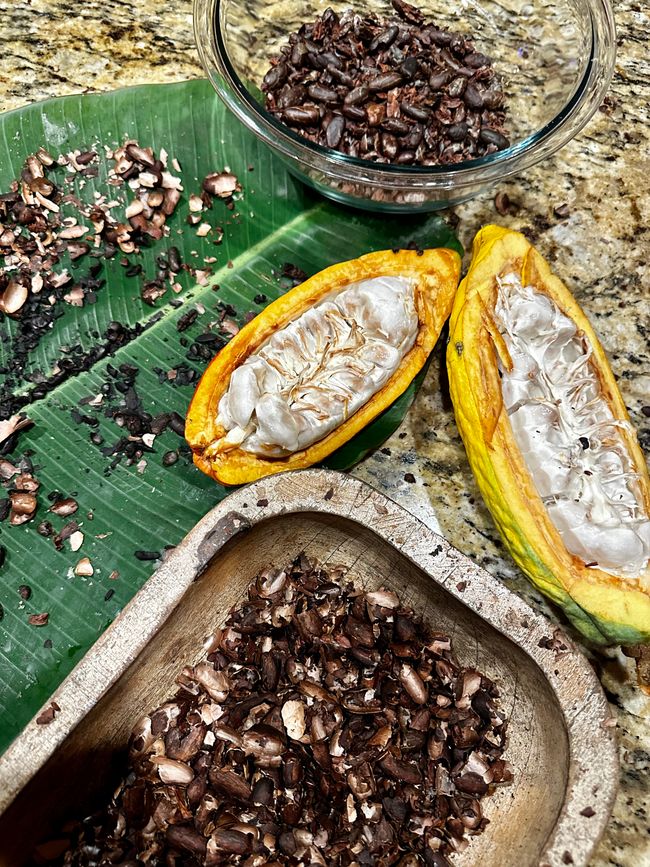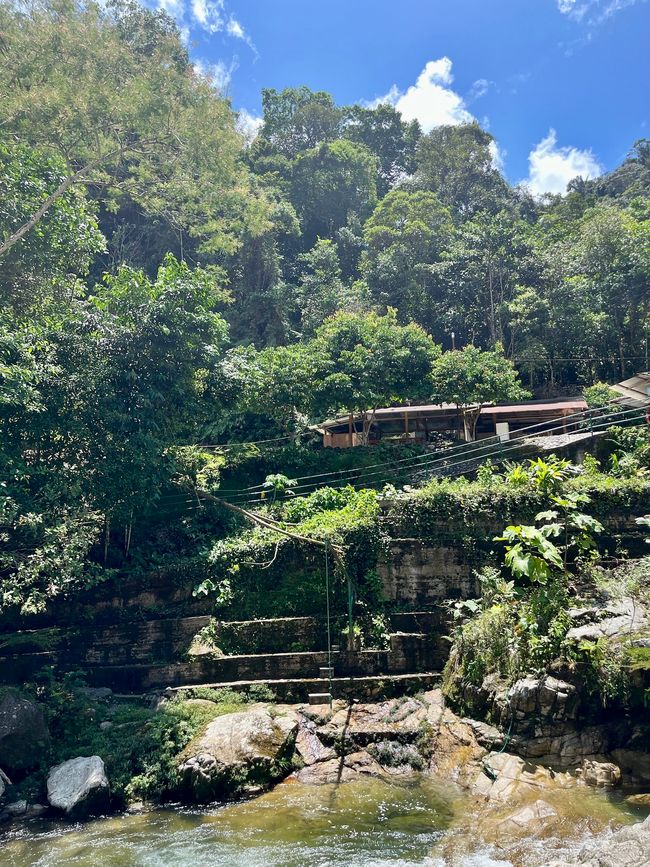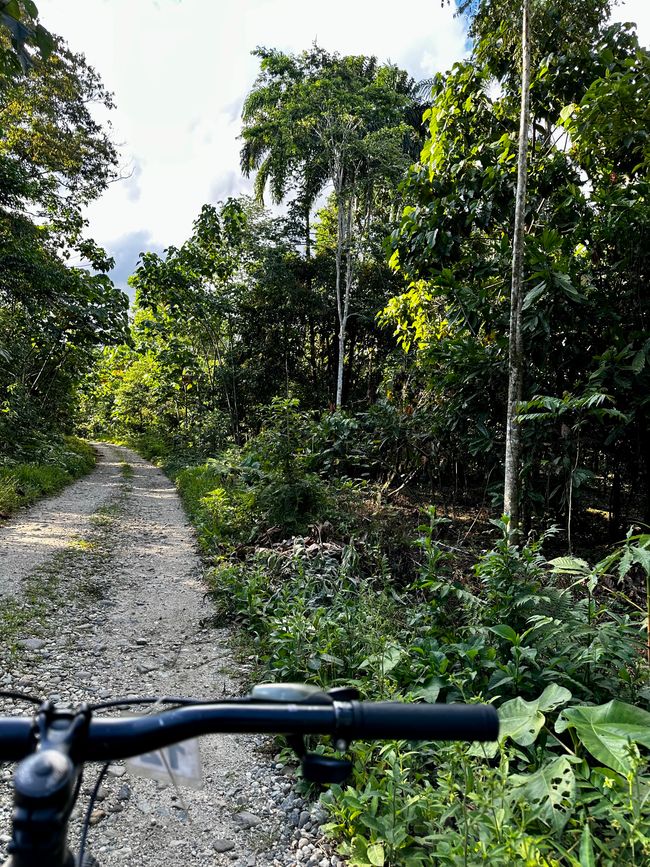Sport and chocolate
Diterbitkeun: 27.04.2024
Ngalanggan Newsletter
The idea of the jungle noises has already taken root. On our second night it rained heavily until the morning and I started the day well rested. Even though we have to get up earlier today to continue our Jungle Run Club, we have already gained two new members and extended the route - now we know our way around. When we get back, we can sit down at the breakfast table straight away: today we have pancakes with papaya, strawberries and banana. What a start to the day!
Then we have some time to pack our backpacks and put on our swimwear. With sunscreen, towel and insect repellent in our luggage, we take a walk to the lagoon on the Rio Napo. The river is already bigger than the one we saw on the first day and later flows into the Amazon. Water builds up in the lagoon from a small waterfall and we spend half the day there: we slide over the stones with the current into the lagoon, we swing on a rope or jump from a 5m high cliff into the water and just relax. I try a backflip from a smaller 1m high stone and after three attempts I am actually quite successful: I land on my shins, but unfortunately I cannot find a higher stone to practice on. Then we head back on the back of the pick-up truck, where lunch is already waiting for us. Instead of bread with the soup, we eat local salty popcorn - simply fantastic. So the next time we have pea soup at home, we have popcorn. Monika and I are helping with the dishes in the kitchen today; we have been looked after so wonderfully and warmly over the last few days and can now show our gratitude. The sink is also on the edge of the kitchen so we can look into the jungle while we do it. Before we set off for Shandia, we say goodbye to the Kichua family and enjoy the last moments. After a short pickup ride, we hop on our mountain bikes and ride about an hour over gravel paths and asphalt roads to Shandia. There are always large quantities of beans lying on the side of the road, which we will learn more about later. I have already seen large groups of racing cyclists in Quito and am also keeping the Amazon in mind for this, perhaps I will come back again. For the first time, I dare to take my hands off the handlebars every now and then and now I really feel like a bird in the Amazon with the wind in my face and the view of the seemingly endless green. When we arrive in Shandia, we have some free time and after three days in the jungle, we enjoy a warm shower and light in the rooms. Then we start our chocolate workshop, where we can learn more about the traditional production process and even help out. We start with the cocoa fruit and try the "fresh" cocoa beans, which are the kernels of the plant and are covered in a kind of pulp that tastes very similar to mango. In three consecutive fermentation processes that take weeks in total, the cocoa beans separate from the pulp and are then dried in the sun. The collected pulp is used, for example, to make cocoa butter. The beans that we saw earlier on the side of the road are drying cocoa beans. The beans are then roasted in a pan and now we can get to work separating the beans from the shell ourselves. This is comparable to peeling peanuts. The shell can be used for cocoa tea, which I already bought in Quito and which I am still excited about. Of course, we can't resist trying one or two roasted and still lukewarm cocoa beans - cocoa nibs, in other words. The next step is grinding the beans, which we do with a mill attached to the table and turn vigorously until all the cocoa beans are in the bowl as a thick mass. Now we add brown sugar, but it is also possible to use other sweeteners such as honey or white sugar. After roughly mixing, we turn the mass through the mill again. Warm water is now added to the thick mass and we stir with a whisk to create a homogeneous and liquid chocolate. So we already have 100% chocolate and of course we can try it. With a little more water and milk powder (milk does not hold well here unfortunately) we then mix 65% chocolate and are given spoons, strawberries, biscuits and bananas to try our work. We do not learn how the liquid chocolate is then turned into chocolate bars due to a lack of material after the tasting.
After dessert it's time for dinner and we end the evening with games and chocolate martinis.
Ngalanggan Newsletter
Waleran
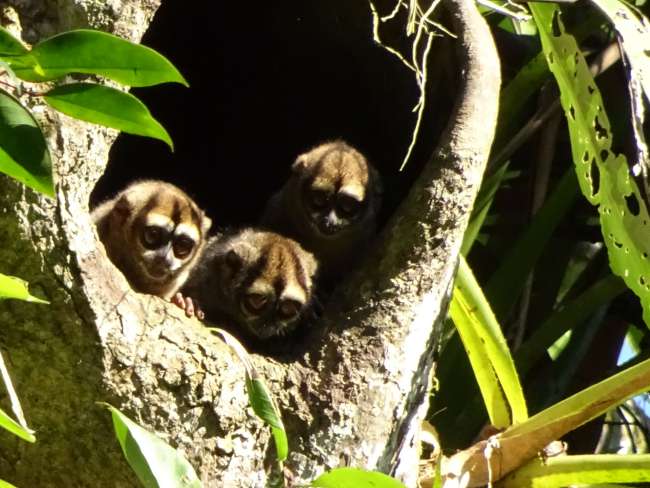
Laporan perjalanan Ékuador
